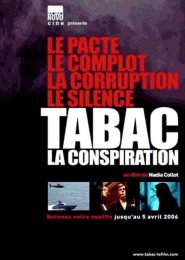Hofmann’s Potion, Connie Littlefield, provided by the National Film Board of Canada
Hoffmann’s Potion (2002)
The Discovery of LSD: A Serendipitous Accident
In 1943, Swiss chemist Dr. Albert Hofmann accidentally stumbled upon a remarkable compound while working at the pharmaceutical company Sandoz Laboratories. This compound, known as D-lysergic acid diethylamide (LSD), was initially synthesized by Hofmann in 1938 as part of his research into ergot alkaloids. However, it wasn’t until five years later that he experienced the profound effects of LSD firsthand.
On April 19, 1943, Hofmann intentionally ingested a small amount of LSD, curious about its properties. Little did he know that this seemingly innocuous act would lead to one of the most significant discoveries in the field of psychoactive substances.
The Bicycle Day: A Transformative Experience
Hofmann’s self-experimentation with LSD resulted in an unexpected and intense psychedelic journey. He described vivid hallucinations, altered perceptions of time and space, and a profound sense of interconnectedness with the universe. Hofmann famously rode his bicycle home during the peak of the experience, which became known as “Bicycle Day.” This event marked the birth of LSD’s influence on human consciousness.
LSD and the 1960s Counterculture
In the 1960s, LSD gained widespread popularity, especially among the counterculture movement. It became a symbol of rebellion, creativity, and spiritual exploration. Artists, musicians, and intellectuals embraced LSD as a tool for expanding their minds and challenging societal norms. Psychedelic experiences were seen as a means to access higher states of consciousness and explore the depths of human perception.
Scientific Research and Controversy
Beyond its cultural impact, LSD also played a crucial role in scientific research. Psychologists and psychiatrists conducted experiments using LSD to study altered states of consciousness, creativity, and mental health. However, as the drug’s recreational use escalated, concerns about safety and potential adverse effects grew.
The Decline and Legal Restrictions
By the late 1960s, governments around the world began to view LSD as a threat. Concerns about its unpredictable effects, potential for abuse, and association with the counterculture led to its classification as a controlled substance. Research into LSD’s therapeutic potential was severely restricted, and its reputation became tarnished.
Legacy and Ongoing Interest
Despite its decline in popularity, LSD continues to captivate researchers, artists, and curious minds. Recent studies have explored its potential in treating conditions like anxiety, depression, and post-traumatic stress disorder (PTSD). The psychedelic renaissance has reignited interest in substances like LSD, emphasizing their therapeutic possibilities when used responsibly and under controlled conditions.
In summary, Hofmann’s Potion—the accidental discovery of LSD—forever altered our understanding of consciousness, creativity, and the human mind. Whether viewed as a scientific marvel, a cultural phenomenon, or a cautionary tale, LSD remains a potent symbol of exploration and transformation.




